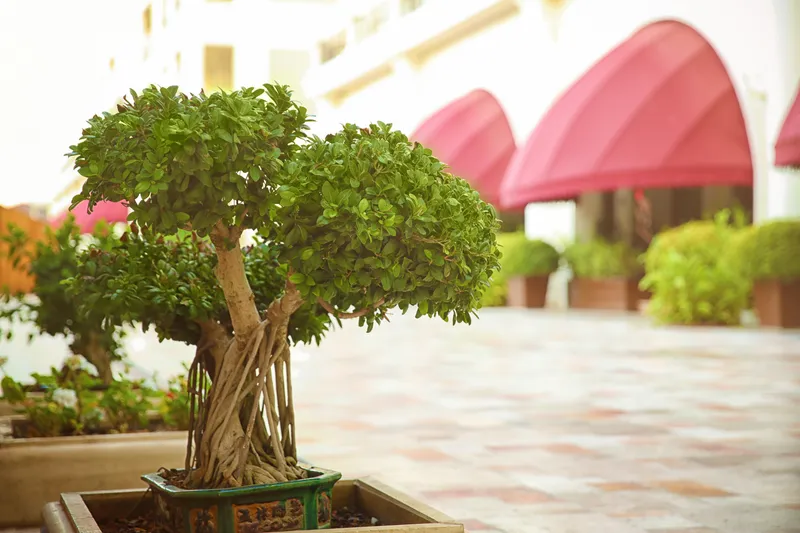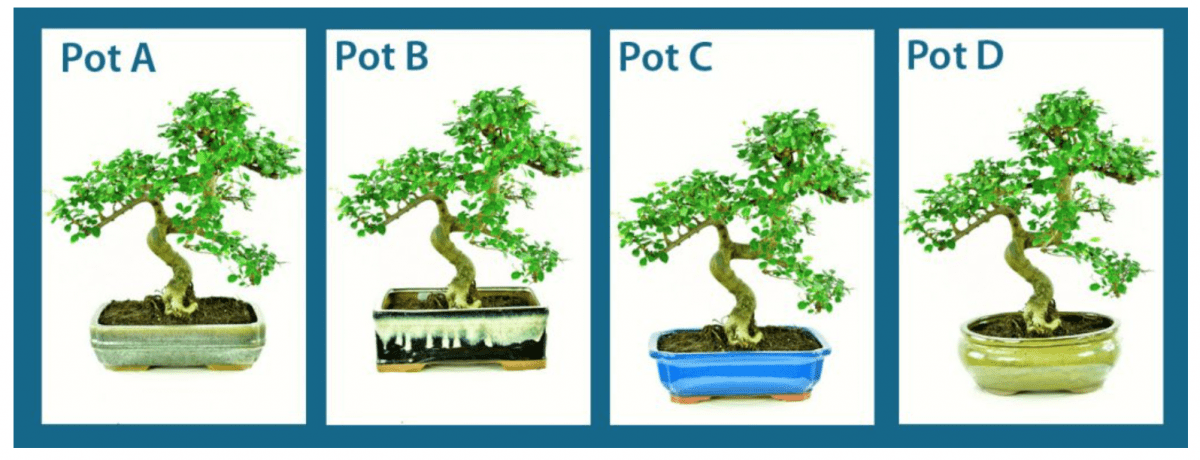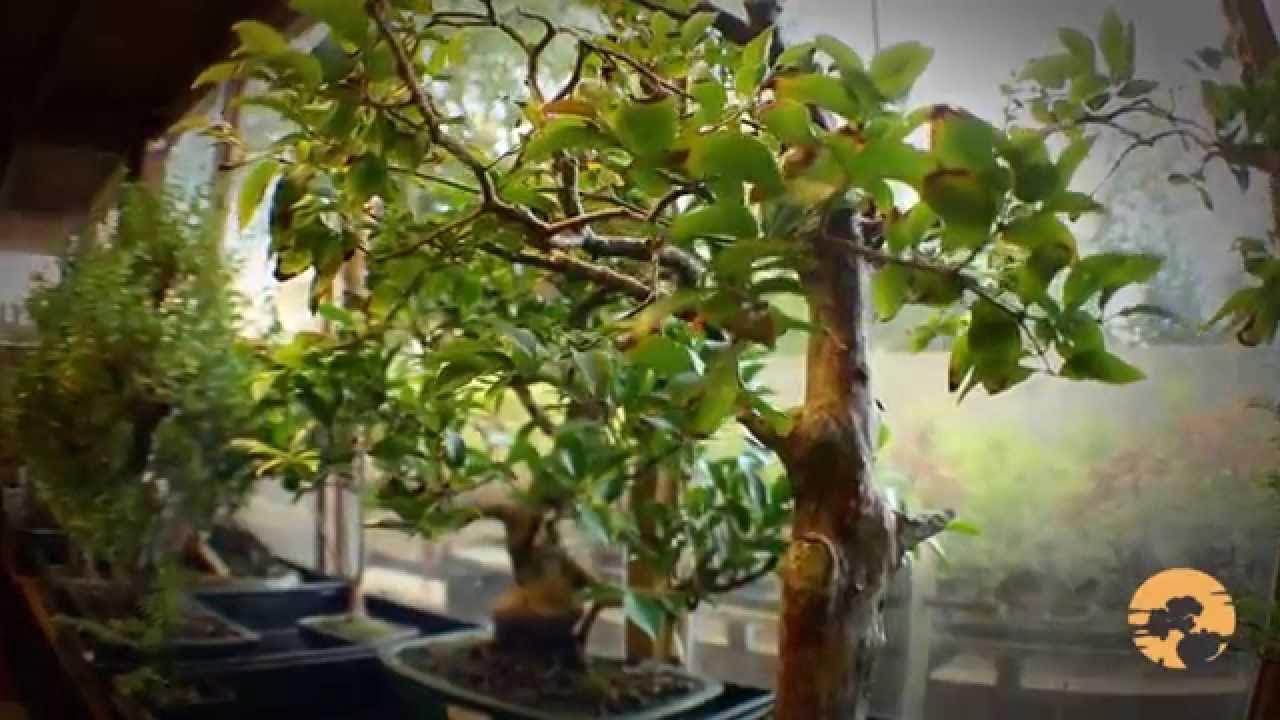So, you’ve decided you want to dabble in the ancient art of bonsai tree cultivation. You know, just a casual hobby to add some zen to your everyday life. But hold on a second, which bonsai tree should you actually buy?
With so many options out there, it’s like picking a needle out of a perfectly pruned haystack. Fear not, my friend, for this article will guide you through the treacherous terrain of bonsai tree selection, helping you find the perfect miniature plant companion that will make all your gardening friends green with envy.
Determining Your Needs and Preferences

Consider your experience level
Before diving into the world of bonsai trees, it’s vital to assess your experience level. Are you a beginner or an experienced bonsai enthusiast? This self-awareness will help you determine the level of care and maintenance you are comfortable with.
Decide on the size of bonsai tree
Size matters when it comes to bonsai trees. Consider the available space in your home or garden and determine if you would prefer a small, medium, or large-sized bonsai tree. Remember, larger trees generally require more effort and maintenance.
Choose between indoor or outdoor bonsai trees
Another crucial decision is whether you want to keep your bonsai tree indoors or outdoors. Indoor bonsai trees are more suitable for those living in apartments or regions with harsh weather conditions. On the other hand, outdoor bonsai trees require exposure to sunlight and natural elements.
Consider the specific species you prefer
Now it’s time to let your personal taste shine! Research the various bonsai tree species and choose the one that resonates with you the most. Whether you are drawn to the elegance of the Ficus or the grace of the Japanese Maple, finding a species that sparks joy will enhance your bonsai journey.
Decide on the style of bonsai tree
Bonsai trees come in a variety of styles, each with its own unique charm. From the formal upright style (Chokkan) to the striking cascade style (Kengai), explore the different styles and decide which one speaks to your sense of aesthetics. Choosing the right style adds an extra layer of personality to your bonsai tree.
Researching Different Bonsai Species
There is an astonishing variety of bonsai tree species to choose from, each with its own characteristics and beauty. Research commonly used species like junipers, pines, maples, and elms. Understanding the specific traits and requirements of each species will help you make an informed decision.
Learn about the care requirements
Just like any other living being, bonsai trees have specific care needs. Some species require more sunlight, while others thrive in shade. Research the watering, fertilizing, and pruning requirements of different species to ensure you can meet their needs successfully.
Consider the climate compatibility
When selecting a bonsai tree, it’s essential to consider the climate of your region. Some species are better suited to colder climates, while others thrive in warmer environments. Make sure the species you choose can withstand the temperature and humidity levels of your area.
Research the growth patterns
The growth patterns of bonsai trees vary greatly among different species. Some trees have faster growth rates, while others grow more slowly. Understanding the growth patterns of the species you are interested in will help you anticipate the maintenance and pruning requirements.
Consider the aesthetic appeal
Beauty is in the eye of the beholder, and bonsai trees offer a wide range of aesthetic appeal. Some species exhibit delicate flowers, while others showcase captivating foliage. Consider which visual elements resonate with you and select a species that matches your personal preferences.
Choosing the Appropriate Bonsai Size
The size of your bonsai tree should be determined by the space you have available. If you live in a tiny apartment, a small-sized bonsai tree would be a more suitable choice. On the other hand, if you have a spacious garden, you can opt for a larger tree that becomes a focal point.
Determine the desired visual impact
Think about the visual impact you want your bonsai tree to have. Are you aiming for a subtle accent or a bold statement piece? Smaller bonsai trees can create an air of elegance and tranquility, while larger ones can become commanding features of your outdoor or indoor space.

Think about the long-term maintenance
It’s crucial to consider the long-term maintenance requirements of the size of bonsai tree you choose. Larger trees generally require more pruning and shaping, while smaller ones might need less frequent maintenance. Assess your commitment level and choose a size that aligns with your desired level of involvement.
Indoor or Outdoor Bonsai: Making the Decision
Evaluate your indoor environment
If you plan to keep your bonsai tree indoors, assess the environment where you intend to place it. Does it receive enough natural light? Is the humidity level suitable for the species you have in mind? Take into account factors like temperature, ventilation, and available space before making a decision.
Assess the outdoor conditions
For those considering outdoor bonsai trees, assess the conditions of your outdoor space. Observe the amount of sunlight it receives, the wind exposure, and the overall climate. Ensure that the species you choose can withstand the outdoor conditions prevalent in your region.
Consider the species’ natural habitat
Understanding the natural habitat of the bonsai tree species you are interested in is crucial. Some trees are naturally adapted to indoor environments, while others thrive in the great outdoors. Mimicking the natural habitat of your chosen species will optimize its growth and overall health.
Think about the level of commitment
Keeping a bonsai tree, whether indoors or outdoors, requires a certain level of commitment. Indoor trees may need to be monitored closely for watering and lighting needs. Outdoor trees require regular care throughout the year. Consider your lifestyle and the time you can dedicate to the care and maintenance of your bonsai tree.
Understanding the Different Bonsai Styles
Explore the formal upright style (Chokkan)
The formal upright style, known as Chokkan, captures the essence of elegance and balance. In this style, the trunk grows vertically, tapering gently towards the apex. Research the techniques and characteristics involved in creating this classic and traditional bonsai style.

Discover the informal upright style (Moyogi)
The informal upright style, known as Moyogi, offers a more organic and natural appearance. Unlike the straight and formal upright style, Moyogi showcases curves and bends in the trunk, reflecting the asymmetry found in nature. Delve into the techniques required to create this captivating and dynamic style.
Learn about the slanting style (Shakan)
The slanting style, known as Shakan, adds a touch of whimsy and drama to your bonsai collection. This style mimics the effect of natural elements, like a tree leaning against strong winds or a slope. Research the techniques involved in achieving the perfect slanted look and create a bonsai tree with a unique personality.
Consider the cascade style (Kengai)
For those who crave drama and elegance, the cascade style, known as Kengai, is a stunning choice. In this style, the branches cascade downwards, creating a breathtaking waterfall effect. Learn about the specialized techniques required to achieve this mesmerizing bonsai style.
Delve into the semi-cascade style (Han-Kengai)
The semi-cascade style, known as Han-Kengai, offers a subtler version of the cascade style. In this style, some branches flow downwards while others maintain an upright position. Explore the nuances of this captivating style and create a bonsai with a sense of movement and grace.
Discover the literati style (Bunjin)
The literati style, known as Bunjin, is an artful representation of nature’s resilience against harsh conditions. In this style, the trunk grows with twists and turns, representing the struggle for survival. Embrace the artistic challenge of creating a literati-style bonsai and cultivate a symbol of strength and perseverance.
Considering the Level of Care Required
Different bonsai species and styles require varying levels of time commitment. Some species demand daily attention, while others can thrive with less frequent care. Assess your schedule and lifestyle to determine the level of care you can provide to your bonsai tree consistently.

Consider the watering and fertilizing needs
Understanding the watering and fertilizing needs of your chosen bonsai tree species is essential. Some trees need frequent watering, while others prefer a drier environment. Similarly, the fertilizing requirements may vary based on the species. Research and learn how to provide the optimal nutrients and water for your bonsai’s health.
Think about the pruning and shaping requirements
Pruning and shaping are necessary aspects of bonsai tree maintenance. Different species and styles have specific pruning requirements. Some may require constant trimming, while others may need more precise shaping. Consider your comfort level with pruning and shaping before selecting a bonsai tree.
Evaluate the repotting and root care demands
Repotting and root care are essential to maintain the health and longevity of bonsai trees. Some species require repotting more frequently, while others can go several years between repotting sessions. Learn about the repotting timelines and the proper techniques to ensure your bonsai’s roots stay healthy.
Research the pest and disease susceptibility
No plant is immune to pests and diseases, and bonsai trees are no exception. Different species may be more susceptible to specific pests or diseases. Research the common issues that can arise with your chosen bonsai species and learn proper prevention and treatment methods.
Exploring Bonsai Nurseries and Sellers
To ensure the quality and authenticity of your bonsai tree, research reputable nurseries. Look for nurseries known for their expertise in bonsai cultivation and ethical practices. Take the time to read reviews and seek recommendations from fellow bonsai enthusiasts before making a purchase.
Visit local bonsai sellers
Exploring local bonsai sellers offers a unique opportunity to view and assess different bonsai trees personally. Visit nurseries, garden centers, or specialized bonsai shops in your area. Engage with the sellers, ask questions, and closely inspect the trees before making a final decision.
:strip_icc()/conifer-bonsai-5b4a29c9-363681044cd84f8c927adf91f21ed9b2.jpg)
Attend bonsai shows and exhibitions
Bonsai shows and exhibitions are excellent opportunities to immerse yourself in the world of bonsai. Attend these events to see a wide variety of bonsai trees, discover new species, and interact with experienced growers. Take advantage of the chance to learn from experts and gain inspiration for your own bonsai collection.
Consider online shopping options
Online shopping provides convenience and access to a broader range of bonsai trees. Research reputable online sellers that specialize in bonsai trees. Read customer reviews and carefully examine photos and descriptions to ensure the quality of the trees being offered.
Read customer reviews and ratings
Before making any purchase, it’s always valuable to read customer reviews and ratings. Feedback from other buyers can offer insight into the quality of the bonsai trees and the credibility of the sellers. Consider the experiences of fellow bonsai enthusiasts to make an informed decision.
Inspecting the Bonsai Tree’s Health and Condition
When inspecting a bonsai tree, pay close attention to the foliage. Look for vibrant, uniformly colored leaves or needles. Wilted, discolored, or sparse foliage may indicate an underlying health issue. A healthy tree should have lush foliage that demonstrates vitality.
Examine the trunk and branches
The trunk and branches of a bonsai tree tell its story. Look for a well-formed and visually appealing trunk with natural-looking bark. Assess the branches for symmetry and balance. Avoid trees with obvious flaws, such as large scars or unnatural bends that detract from the overall aesthetic.
Inspect the root system
A bonsai tree’s root system is its foundation for growth. Carefully examine the roots to ensure they are healthy and well-developed. Look for a compact, radial arrangement of roots that indicates a well-established tree. Inspect for any signs of root rot or imbalances that may affect the tree’s vitality.
Look for signs of pests or diseases
Pests and diseases can wreak havoc on a bonsai tree’s health. Inspect the tree carefully for any signs of infestation, such as webs, discoloration, or holes in the foliage. Check for symptoms of common bonsai diseases, such as leaf spot or root rot. A healthy bonsai tree is free from these harmful intruders.
Assess the overall vitality
Finally, step back and assess the overall vitality of the bonsai tree. Does it radiate a thriving energy? Do all the components, including foliage, trunk, branches, and roots, come together harmoniously? Choose a bonsai tree that exudes life and vitality, inviting you to care for and nurture it.
Seeking Expert Advice and Guidance
One of the best ways to expand your knowledge and understanding of bonsai is by consulting with fellow enthusiasts or experts. Seek out experienced growers and inquire about their insights and advice. Their guidance can be invaluable in selecting the perfect bonsai tree for your needs.
Join a local bonsai club or organization
Local bonsai clubs and organizations are treasure troves of knowledge and support. Joining such a group allows you to connect with like-minded individuals who share your passion for bonsai. Engage in group activities, attend workshops, and learn from seasoned bonsai practitioners.
Take advantage of online forums and communities
The internet offers a vast array of online forums and communities dedicated to bonsai. Participate in these platforms to seek advice, share experiences, and learn from enthusiasts worldwide. The collective wisdom and support of online communities can be an excellent resource for beginners and experienced growers alike.
Consider attending bonsai workshops or classes
Attending bonsai workshops or classes provides hands-on learning experiences and direct access to experts. Look for workshops, seminars, or classes offered in your area and participate to enhance your bonsai skills. Gaining practical knowledge under the guidance of professionals can be a game-changer for your bonsai journey.
Seek guidance from experienced bonsai growers
Reach out to experienced bonsai growers in your local community or online. Ask for guidance and advice based on their years of experience. Bonsai growers are usually passionate about their craft and more than willing to share their knowledge to nurture the growth of new bonsai enthusiasts.
Setting a Budget for Your Bonsai Tree
When entering the world of bonsai, it’s crucial to set a realistic budget. Determine how much you are willing to spend on acquiring and maintaining your bonsai tree. Remember to consider any additional costs, such as tools, pots, soil, and fertilizer.
Consider additional costs
In addition to the initial cost of the bonsai tree, there are other expenses to consider. Bonsai trees may require specific tools, such as pruning shears or wire, to maintain their shape and health. You may also need to invest in quality soil and fertilizer. Take into account these additional costs when setting your budget.
Evaluate the long-term investment
Bonsai trees are not just fleeting houseplants; they are living investments that can bring you joy for years or even decades. Consider the long-term value of your bonsai tree when setting your budget. Investing in a high-quality tree upfront may save you money in the long run.
Balance budget with bonsai quality
As with any purchase, it’s essential to strike a balance between your budget and the quality of the bonsai tree. While it may be tempting to opt for a lower-priced tree, remember that quality comes with a price. Find a bonsai tree that meets your budget while still offering the level of craftsmanship and health you desire.
With these comprehensive guidelines in mind, you are well-equipped to embark on the journey of choosing the perfect bonsai tree. Remember to consider your needs, preferences, and level of commitment as you navigate the mesmerizing world of bonsai. Happy bonsai hunting!


